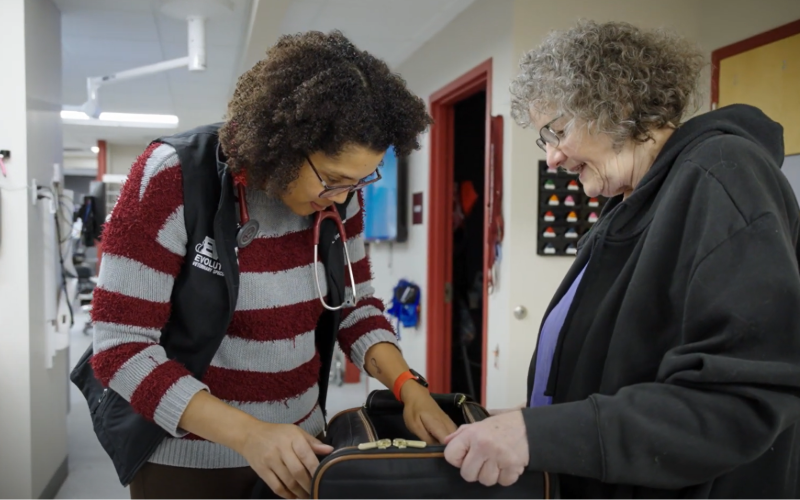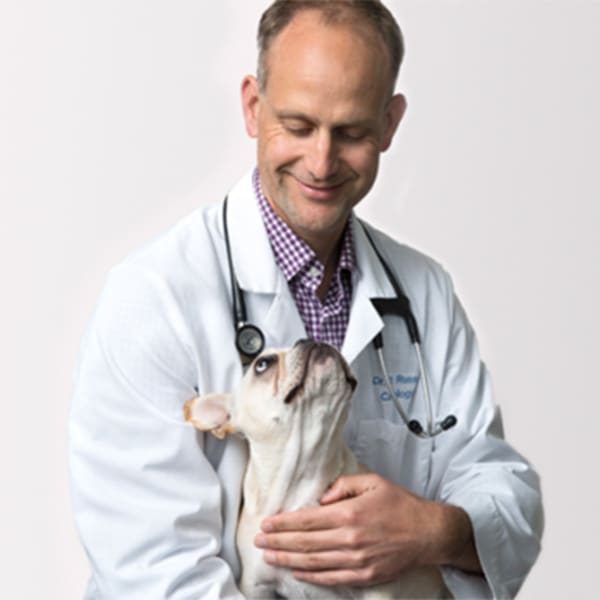The Function of Ultrasound and CT Scan in Modern Veterinary Practices: Insights From Experienced Professionals
In modern vet methods, ultrasound and CT scans significantly enhance diagnostic abilities. These imaging strategies give vital insights into animal health, leading therapy decisions. Experienced specialists recognize the one-of-a-kind benefits of each technique. Ultrasound provides real-time evaluations, while CT checks deliver intricate anatomical details. Recognizing their roles and applications raises crucial concerns regarding their effect on individual outcomes and the future of veterinary diagnostics. What insights can be acquired from their combined use?
Understanding Ultrasound in Vet Medication
Ultrasound is an essential analysis device in vet medication, supplying a non-invasive approach to imagine interior structures. This imaging strategy uses high-frequency acoustic waves to produce real-time pictures of tissues and organs, permitting vets to analyze problems without surgical treatment. Usual applications consist of examining the heart, liver, kidneys, and reproductive body organs, along with keeping track of pregnancies.The treatment is relatively fast and can be carried out in different settings, making it an available choice for vets. Unlike radiography, ultrasound supplies thorough info about soft cells and blood circulation, which is essential for exact diagnoses.Veterinary professionals depend on ultrasound to detect irregularities such as tumors, cysts, and fluid accumulation. Its capacity to guide biopsies and various other procedures better improves its utility in professional method. By offering a effective and secure method to examine internal anatomy, ultrasound has actually become a keystone of modern-day vet diagnostics.
The Benefits of CT Checks for Animal Diagnostics
CT checks deal considerable advantages in veterinary diagnostics by giving enhanced precision in recognizing internal conditions (CT Scans For Dogs). As a non-invasive imaging strategy, they assure the security and convenience of animals during assessments. Additionally, CT checks promote a thorough evaluation of inner frameworks, allowing for more reliable treatment preparation
Boosted Analysis Accuracy
Improvements in imaging innovation have actually considerably boosted analysis precision in vet medication, specifically through the use of CT scans. These scans give comprehensive cross-sectional pictures of a pet's interior structures, allowing veterinarians to identify irregularities with accuracy. The high resolution and three-dimensional abilities of CT imaging promote the detection of conditions such as tumors, cracks, and interior blood loss that could be missed with traditional imaging approaches. Furthermore, CT scans can help in pre-surgical planning by supplying a detailed view of anatomical partnerships. This level of detail not only enhances the accuracy of diagnoses but also help in tailoring efficient therapy plans. As a result, the assimilation of CT technology right into veterinary practices is changing the landscape of animal medical care, boosting outcomes for individuals.
Non-Invasive Imaging Method
The intro of non-invasive imaging methods has actually reinvented animal diagnostics, with CT scans arising as a popular tool in veterinary techniques. These scans provide high-resolution, cross-sectional pictures of an animal's interior frameworks, enabling vets to analyze intricate problems without the demand for intrusive treatments. The advantages of CT scans include their capacity to spot lumps, cracks, and inner blood loss with amazing precision. Furthermore, they assist in the examination of soft tissues and body organs, enhancing analysis capacities. The rate of CT scanning makes it possible for fast decision-making, which is crucial in emergency situation circumstances. By reducing tension and discomfort for the pet, CT scans contribute to a much more humane strategy to diagnostics, eventually improving therapy outcomes and advancing vet treatment.
Comprehensive Internal Assessment
A comprehensive interior evaluation is crucial for accurate diagnosis and effective treatment in vet medication. CT checks deal substantial benefits hereof, supplying thorough cross-sectional pictures of a pet's inner frameworks. This sophisticated imaging technique boosts visualization of complex physiological areas, making it possible for vets to identify problems such as lumps, cracks, and interior bleeding with better accuracy. On top of that, CT checks assist in the assessment of conditions that may be challenging to detect with conventional techniques. The rate and precision of CT imaging likewise add to timely interventions, enhancing client results. As veterinary methods progressively integrate CT technology, the benefits of comprehensive interior evaluations end up being apparent, strengthening the relevance of this tool in contemporary vet diagnostics.
Comparing Ultrasound and CT Imaging Techniques
While both ultrasound and CT imaging offer important roles in veterinary diagnostics, each technique offers distinct benefits and limitations that can affect scientific decision-making. Ultrasound is especially valued for its real-time imaging abilities, permitting vets to observe vibrant physiological processes. This strategy is non-invasive, mobile, and does not include ionizing radiation, making it a safer option for both pets and medical professionals. Ultrasound may have restrictions in imagining specific physiological frameworks or deep tissues.Conversely, CT imaging offers thorough cross-sectional views of the body, enabling for exact localization of abnormalities. It masters examining complex body organs and structures, particularly in the thorax and abdominal area. Nonetheless, CT scans need sedation or anesthesia in a lot of cases and involve direct exposure to ionizing radiation. Ultimately, the selection between ultrasound and CT relies on the particular clinical situation, the location of rate of interest, and the necessity of the diagnostic needs.
Case Studies: Successful Medical Diagnoses Through Imaging
Study highlight the considerable improvements in analysis precision achieved with innovative imaging innovations like ultrasound and CT scans in vet practices. These innovations not just boost the detection of different problems but also assist in effective and timely therapy strategies. Analyzing certain instances can highlight the transformative impact helpful resources of these imaging techniques on veterinary medicine.
Diagnostic Precision Improvements

Imaging Modern Technology Advancements
As vet imaging technology continues to progress, its effect on diagnostic abilities ends up being progressively obvious. Recent instance researches highlight the effective application of innovative ultrasound and CT check strategies in determining complicated problems. As an example, a veterinary clinic utilized high-resolution CT scans to diagnose a rare kind of lung cancer cells in a pet, which standard imaging had actually missed. An ultrasound evaluation revealed a stomach mass in a feline, prompting prompt surgical treatment and a favorable result. These advancements not only enhance diagnostic precision yet additionally make it possible for veterinarians to develop targeted treatment strategies. By leveraging sophisticated imaging technologies, vet professionals are significantly enhancing patient treatment, resulting in extra efficient management of different health and wellness conditions in pets.
The Duty of Imaging in Emergency Veterinary Care
Imaging plays a vital role in emergency situation vet treatment, supplying vets with important info required to make quick, enlightened decisions. In urgent situations, methods like ultrasound and CT scans make it possible for professionals to promptly examine a pet's internal structures, determining critical conditions such as inner blood loss, fractures, or body organ problems. These imaging methods enable real-time analyses, facilitating timely treatments that can be life-saving. As an example, ultrasound is indispensable for reviewing soft tissue injuries and conditions like fluid build-up, while CT checks deal comprehensive photos of complex anatomical frameworks, important for identifying trauma instances. The speed and accuracy of these imaging techniques improve the vet's ability to create reliable therapy strategies, ensuring the best possible outcomes for their clients. The combination of sophisticated imaging modern technologies into emergency veterinary methods is not just beneficial but significantly required, as it improves analysis abilities and enhances total pet care throughout important moments.

Training and Experience in Veterinary Imaging
Although innovative imaging techniques such as ultrasound and CT scans are crucial for reliable veterinary treatment, the successful application of these technologies heavily relies on the training and know-how of vet professionals. Skilled usage of imaging devices requires extensive expertise of makeup, pathology, and the principles underlying each modality. Veterinary experts have to undergo specialized training to precisely analyze imaging outcomes, which is essential for diagnosing conditions and planning treatment.Certifications and continuing education in veterinary imaging improve the abilities of professionals, enabling them to stay updated with technological innovations. Cooperation in between radiologists and vets frequently causes boosted analysis precision, as experts can supply insights into complex cases. Additionally, practical experience in handling imaging equipment fosters self-confidence in its application. Inevitably, the top quality of vet imaging services is directly correlated to the degree of training and knowledge possessed by the professionals making use of these crucial analysis tools.
Future Trends in Diagnostic Imaging for Animals
With the quick innovations in innovation, veterinary diagnostic imaging is positioned for considerable evolution in the coming years. Arising patterns indicate a change towards more easily accessible and portable imaging methods, such as portable ultrasound gadgets, which can boost field diagnostics. Additionally, the assimilation of expert system is expected to revolutionize picture analysis, enabling quicker and much more accurate analyses of results.Moreover, improvements in 3D imaging techniques and calculated tomography will give veterinarians with even more complete views of pet anatomy, leading to better treatment strategies. Virtual truth technology might also contribute in surgical preparation and education and learning, providing veterinarians a distinct perspective on complex cases.As telemedicine proceeds to grow, remote examinations facilitated by diagnostic imaging will come to be extra common, permitting specialists to help basic specialists in real-time. On the whole, these trends are readied to enhance the effectiveness and over at this website effectiveness of veterinary care, eventually boosting animal results.
Regularly Asked Questions
Just How Much Do Ultrasound and CT Checks Cost in Vet Facilities?
The expenses of ultrasound and CT scans in veterinary facilities generally vary from $300 to $1,500, depending on elements such as place, facility kind, and details procedures required for the pet's medical diagnosis and therapy.

Exist Any Risks Associated With Ultrasound and CT Checks for Family Pets?
Ultrasound and CT scans normally posture minimal threats to family pets. Potential concerns include sedation responses and direct exposure to anesthetics. Veterinarians meticulously analyze each situation to reduce any kind of threats associated with these diagnostic treatments
The Length Of Time Do Ultrasound and CT Treatments Generally Take?
Ultrasound treatments typically take about 30 minutes to an hour, depending upon the complexity. CT scans, view it now being even more in-depth, usually require 30 mins to 90 minutes, consisting of preparation and recuperation time for the family pet.
Can All Veterinarians Perform Ultrasounds and CT Scans?
Not all vets can carry out ultrasounds and CT scans. Specialized training and qualification are often needed to assure expertise in these advanced imaging strategies, which might restrict their schedule to vets with additional certifications and resources.
What Sorts Of Pets Profit The Majority Of From These Imaging Techniques?
Certain pet varieties, particularly pets and felines, benefit substantially from ultrasound and CT scans. These imaging techniques boost analysis accuracy for problems like tumors, interior injuries, and organ irregularities, causing enhanced treatment results and individual care. The high resolution and three-dimensional capabilities of CT imaging assist in the detection of conditions such as lumps, fractures, and inner bleeding that may be missed out on with conventional imaging approaches. Instance studies illustrate the substantial renovations in analysis accuracy attained through sophisticated imaging innovations like ultrasound and CT scans in veterinary techniques. Improving analysis accuracy in veterinary techniques has actually been considerably aided by developments in imaging modern technologies such as ultrasound and CT scans. Sophisticated imaging strategies such as ultrasound and CT scans are crucial for reliable vet care, the effective implementation of these innovations greatly depends on the training and know-how of veterinary experts. Veterinary professionals must undergo customized training to properly translate imaging results, which is important for identifying problems and planning treatment.Certifications and continuing education and learning in veterinary imaging boost the abilities of experts, allowing them to remain updated with technical developments.